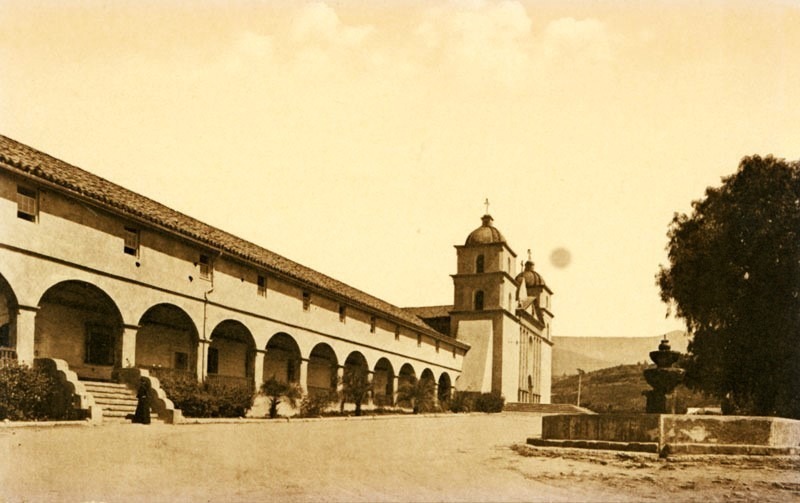Mission Santa Barbara, the tenth mission in the California Mission Chain, was founded on the Feast of Saint Barbara on December 4, 1786, by Father Fermín de Lasuén. The legend holds that when still a young girl, Saint Barbara was beheaded by her father for following the Christian Faith.
In 1782, the Spanish Governor Felipe de Neve began the construction of the last military outpost to be built by Spain in the New World, the Royal Presidio of Santa Barbara, on a natural harbor along the coast. Father Junípero Serra, who had blessed the chosen site, planned to build a new mission nearby. However, the opposition of Felipe de Neve delayed the construction of the new mission until, on August 28, 1784, the Franciscan Friar passed away.
Father Fermín Francisco de Lasuén succeeded him as “Father Presidente” and in 1786 finally founded the Santa Barbara mission on a site located one mile and a half inland from the Royal Presidio. The chosen site was halfway between the Pacific Ocean and the steeply rising Santa Ynez Mountains, near the area where today stands the city of Santa Barbara. Father Antonio Paterna was put in charge of constructing the new mission. He erected the first buildings and made the first converts among the local Native Americans, the Chumash and Barbareño tribes.
The early mission buildings were unpretending and made of adobe bricks. During the first few years, the missionaries built three churches, each one larger than the previous. All the early churches were leveled by earthquakes. The third church, built in 1794, was destroyed with the other mission buildings during the great Santa Barbara Earthquake on December 21, 1812. After the earthquake, construction of the current church was begun and completed in 1820.
Today, Mission Santa Barbara looks much as it did when it was completed in 1820. In 1831, a second tower was added to the present church. It collapsed a year later and was rebuilt in 1833. The Church of Santa Barbara is the only one in the Mission Chain to have two similar towers at its sides. Other than the beauty of the church itself, with stately lines and a Roman temple facade, the mission is renowned for its astonishing water system of dams, reservoirs, and aqueducts built by the Chumash Indian converts.
The extensive mission water system remains to this day, and its largest reservoir, built in 1806 damming a canyon, has been incorporated into the modern water system of the city of Santa Barbara.
On August 17, 1833, the Mexican Congress approved the act known as “An Act for the Secularization of the Missions of California” and, as a consequence, Father President Narciso Durán moved the Mission Chain Headquarters to Santa Barbara where he gathered more than 3,000 manuscripts and documents disseminated among the other California Missions.
Today, this incredible collection of thousands of original documents is maintained by the Santa Barbara Mission Archive-Library, an educational and historical research institution still led by its founders, the Franciscan Friars.
The mission was secularized in 1834 and sold in 1846. In 1865, President Abraham Lincoln returned the Mission to the Catholic Church. Santa Barbara is the only California Mission that was never abandoned since the day of its foundation. The Mission is known as the “Queen of Missions” for its beauty and it is certainly worth a visit.
Today, the Mission stands in a residential area in the northern portion of the city of Santa Barbara and it is surrounded by public parks and a few public buildings. An active parish church serves the community, and a retreat house is available for visiting guests.
Location of Mission Santa Barbara
2201 Laguna Street, Santa Barbara, CA 93105, United States
